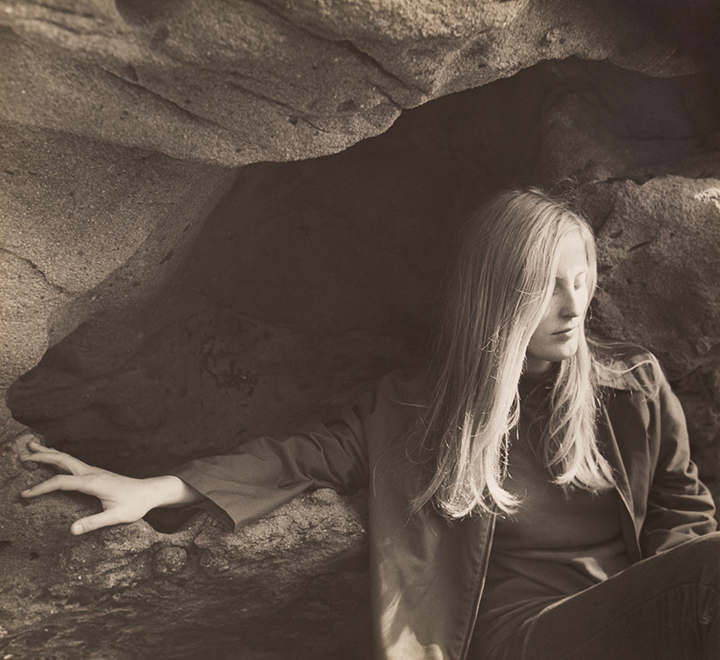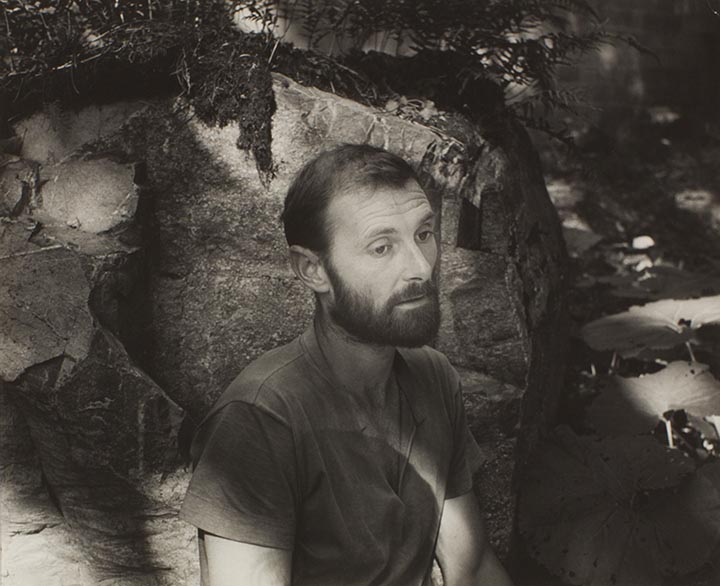About the Photographer
Cunningham, Imogen
American, 1883-1976
A pioneer of photographic modernism, Imogen Cunningham is best known for her elegant botanical and nude figure studies, although her eclectic practice ranged widely, encompassing numerous photographic genres and experiments with narrative sequences and composite imagery. In the early phase of her career, Cunningham made allegorical, soft focus photographs in the pictorialist mode popular at the time. In 1921, around the same time as Edward Weston, with whom she exhibited, she began making sharp images that emphasized form and photographic detail, helping to define the emerging modernist style. One of Cunningham's most celebrated photographs is "Triangles" (1928). In this photograph, Cunningham's composition transforms the female body into an arrangement of geometric forms in an interplay of angles and rounded curves. The image is a study of light, shape, and pattern, but it retains a certain warmth and sensuality beyond its formal emphasis.
Cunningham was also an accomplished portrait photographer, and her pictures of prominent figures such as Alfred Stieglitz and the dancer Martha Graham have become iconic. In 1973, three years before she passed away, Cunningham made a portrait of the reclusive painter Morris Graves, which she titled "Pentimento," an art historical term referring to the visible traces of an earlier painting underneath the top layers on a canvas. Cunningham's photograph translucently superimposes Graves over a placid pond; the seminude artist merges with the sylvan refuge around him, his extended hand overlapping with ripples in the water. The fanciful qualities of the depiction reflect Graves's interest in mysticism as a means to engage with the natural world.
Cunningham attended the University of Washington, where she majored in chemistry and studied the chemical processes involved in photography. After graduating in 1907, she went to work for Edward S. Curtis in Seattle. In 1910 she established her own portrait studio and became one of the first women to make a successful living as a photographer. In 1932 Cunningham became a founding member—along with Edward Weston, Ansel Adams, and Willard Van Dyke—of Group f.64, an organization that championed a "straight" approach to photography, free of any manipulation.




